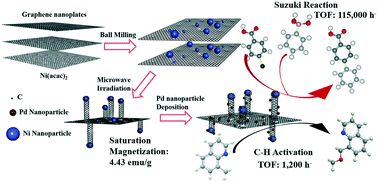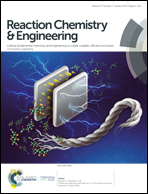Three dimensional composites of graphene as supports in Pd-catalyzed synthetic applications†
Abstract
The graphitic one-dimensional carbon nanotube (CNT) and two-dimensional graphene (G) are important support materials in heterogeneous catalysis. However, the production of highly active but stable and recyclable catalysts using these materials is still challenging. In this work, through a facile and solventless method, a 3D composite was prepared by growing multiwall CNTs on G nanoplatelets through the Ni-catalyzed “tip growth” mechanism using a combination of ball milling and microwave irradiation steps. The advantageous high surface area provided by the atomically thin sheet of G and the aspect ratio of the CNT are combined to retain and enhance the mechanical, electronic, thermal, and catalytic properties. The resulting 3D Ni–graphene–carbon nanotube hybrid (NiGCNT) material exhibits magnetic properties and the unique 3D structure prevents graphene sheet restacking facilitating better catalyst recyclability and longevity. The exceptional catalytic properties provided by this 3D NiGCNT support loaded with Pd nanoparticles were demonstrated and tested in both Suzuki cross-coupling and C–H activation reactions. The Pd–NiGCNT was 10 times more active than commercially available Pd on activated carbon catalysts.



 Please wait while we load your content...
Please wait while we load your content...